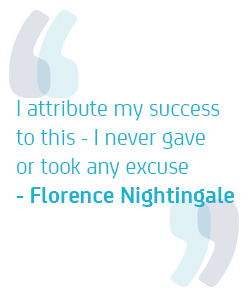 Lots of things contribute to this misperception. Here are just a few.
Lots of things contribute to this misperception. Here are just a few.
Titles and labels – A rose by any other name
One of the biggest challenges to those outside the profession (and some of those within it) is the myriad of titles that nurses use. It confuses nurse leaders and commissioners alike. It’s a great idea to align titles and have a really clear identity.
There are many job titles in use – have you thought about adopting one universally within your organisation? It can help you “brand” the service with a really clear identity. What is your title? What does it say about your “brand”? You can start your Service Summary with your title, your hours and your band etc.
Not being clear about what you do
It’s really important to have a succinct message about the service you provide that everyone who has any decision making influence can understand – this includes people that use the service.
So why not try an Elevator speech? The Elevator speech is thought to have originated in the dot.com boom of the late 1990’s – the idea was to sell or “pitch” to a CEO your idea in the ride of an elevator. Can you sum up in the ride of an elevator what you do? Do you have a “pitch”? Two sentences that sum up what you do and why it’s important? Here is an example from the WCET meeting in 2011:
- “We are a group of specialist stoma nurses who independently manage a caseload of people with complex bowel and bladder problems across acute and community trusts”.
This uses active not passive language and uses words that indicate the complex case management aspect of the role. What would be your elevator speech? You can put your elevator speech in your Service summary and when finessing your Elevator Speech you might want to consider using meaningful language and phrases to avoid.
Not using meaningful words or professional language
Nursing has a professional language that comes from our professional knowledge base – but we rarely use it. Although technical terms might not be appropriate for the people we care for we can consider using them when it’s important to get the complexity of our work across. For example, Proactive case managers/brokers/vigilance, Promote and enable self-management, Key accessible professional across a journey, apply technical expertise, alleviate suffering, perform rescue work, Admission avoidance work/referral. High quality patient experience including resolving poor experience, design and manage own services and work in collaboration with other colleagues.

